Specialized has, of course, been in the tyre game for quite some time, and it has a reputation for delivering solid performance at a reasonable price. The original Butcher was a gnarly tyre that could be run on the front or the rear – scads of grip, impressive cornering abilities thanks to those whopping side knobs, but (especially on the rear) quite a lot of drag. The Slaughter was created as a sort of faster rolling semi-slick cousin of the Butcher, with the same aggro cornering abilities mated to a smoother, more speed friendly centre section.
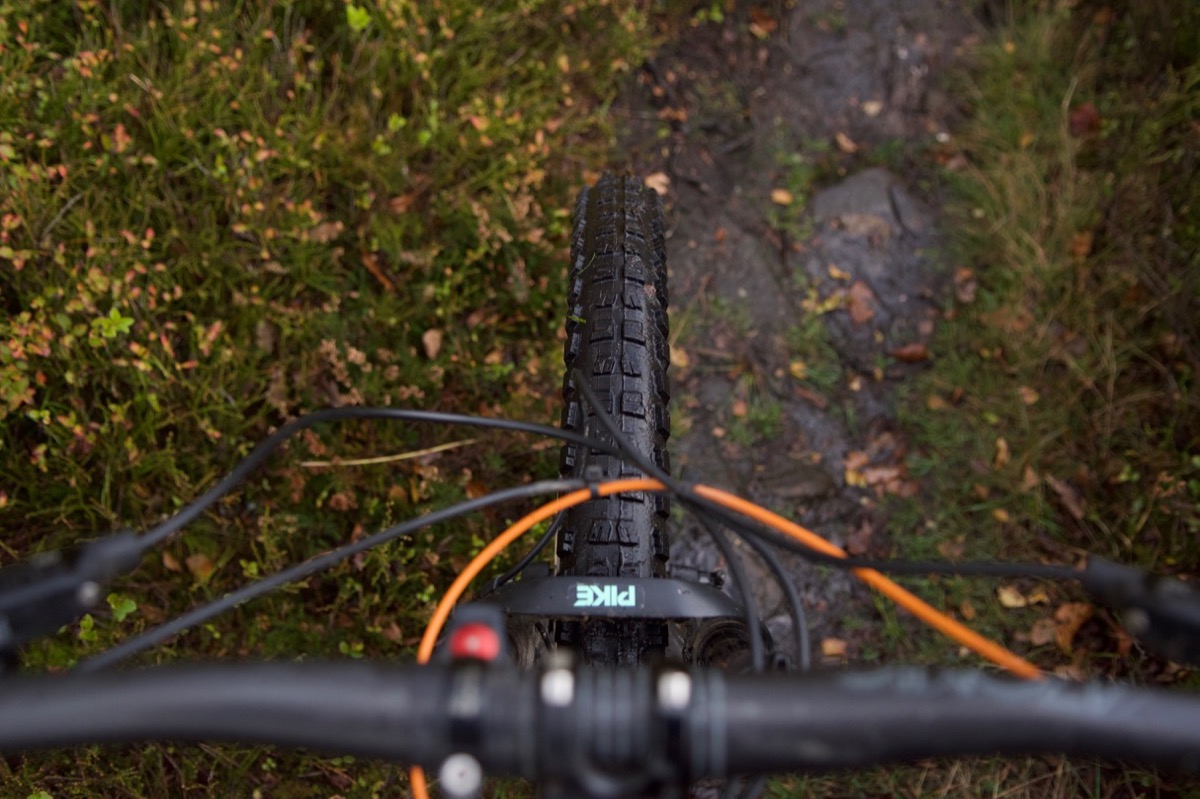
The tyre combo proved popular (although we found that there perhaps wasn’t as much grip on the back as we’d hope, although cornering was good), and now Specialized has released the tyres in the currently popular 27.5+ setup – these ones are 2.8in wide each.
I should state at this point that I’m generally a fan of chubby tyres. I love the traction and the grip, and in the tyres I’ve tried I like the way they’re prone to breaking away under hard cornering in a predictable and totally recoverable fashion.

But the corollary to this, of course, is the way they behave when the going gets muddier. The ones I’ve tried so far seem to float and skate over the mud, and the traction advantages I appreciate in the dry (or damp) disappear completely.
The Butcher and Slaughter 2.8s looks much the same as their narrower brethren, only a teensy bit wider (well, duur). Specialized makes its tyres available in two varieties, GRID and Control. Both use the same 60tpi casing, and the same GRIPTON rubber compound that Specialized has introduced throughout it’s tyre lineup. The Control version is lighter, but the GRID tyres are the more rugged of the two, with reinforced sidewalls. I’ve found this to have a number of benefits. Not only are the GRID tyres more tear-resistant, but they have more support to the sidewall, which is a boon in tricky or high-speed handling situations, and it makes for a more stable tyre when cornering – especially when used tubeless.
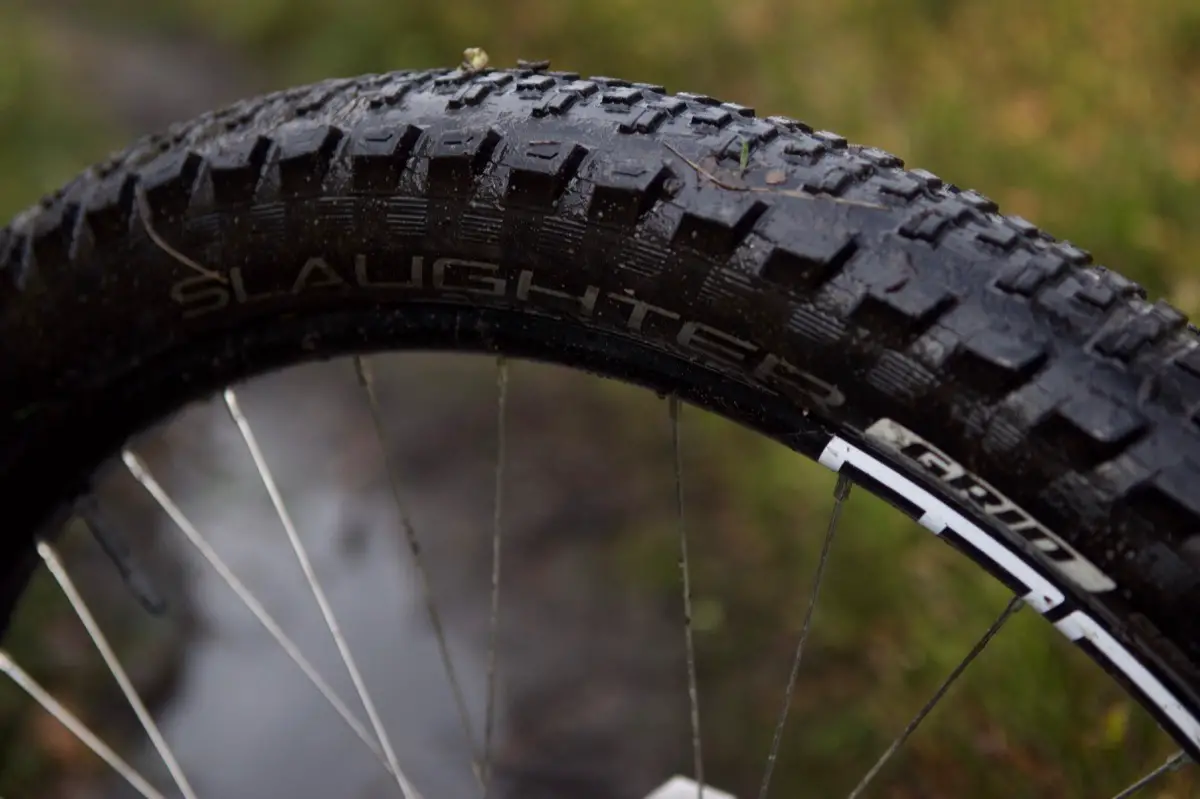
Both of these tyres had GRID sidewalls, I was pleased to see. This was even more critical as I mounted them onto a set of Stan’s Flow Mk 3 rims. These, with their 29mm internal width, are probably the narrowest it’s advisable to run chubby tyres on – and a decent sidewall is critical to stop them wallowing about in corners without going crazy with the tyre pressure.
Both the tyres went up without a hitch, and when inflated come out relatively narrow for 2.8in tyres. I put the Butcher up front, naturally, as I had the Slaughter to play with out back. Weight-wise, the Butcher came in at 1073g, while the Slaughter weighed in at 980g.
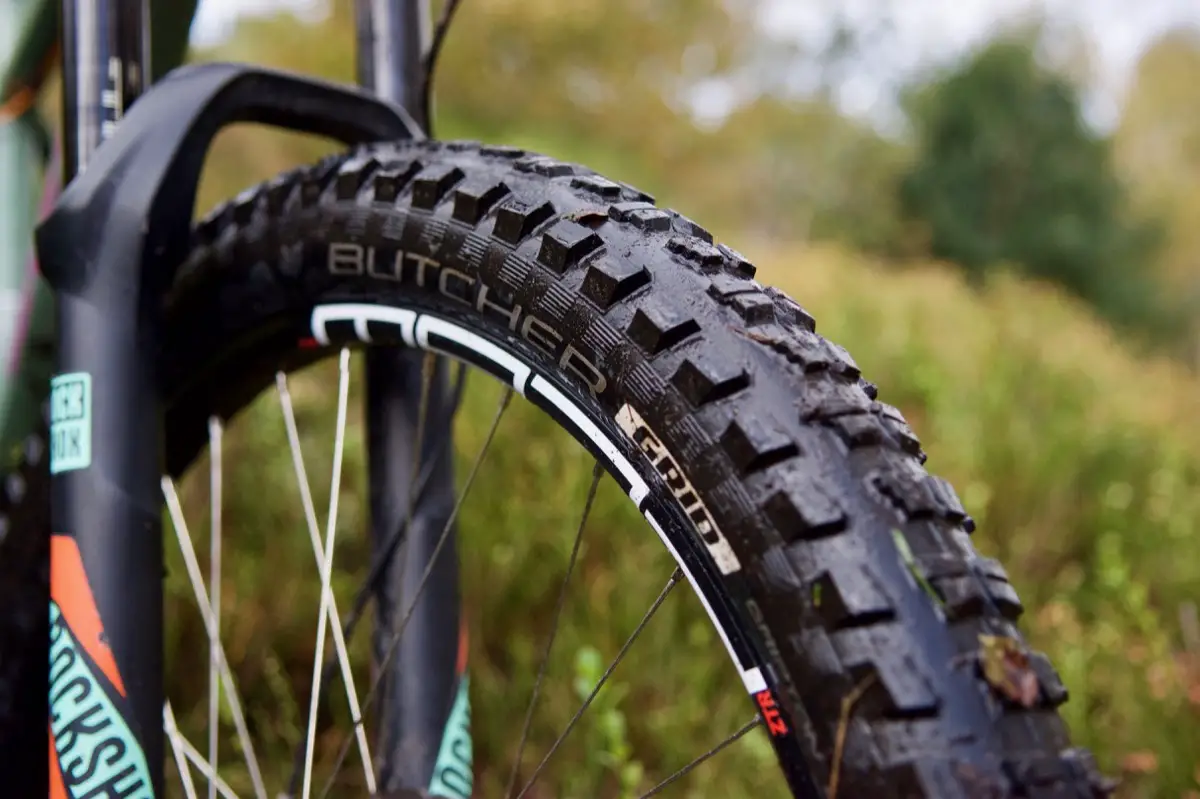
Traction when I first took the tyres out on dry and dryish trails was phenomenal. The Butcher’s tread pattern works exceptionally well up front at keeping the bike pointing in the right direction, and even the semi-slick tread of the Slaughter at the back provided huge amounts of straight-ahead grip. Cornering was also impressive – it took a fair lean for the tyres to begin to break away, and they were soon caught by the impressive side-treads. It’s likely that this breakaway patch would be even smaller if I were running wider rims, which would change the tyre profile and make it slightly less rounded.
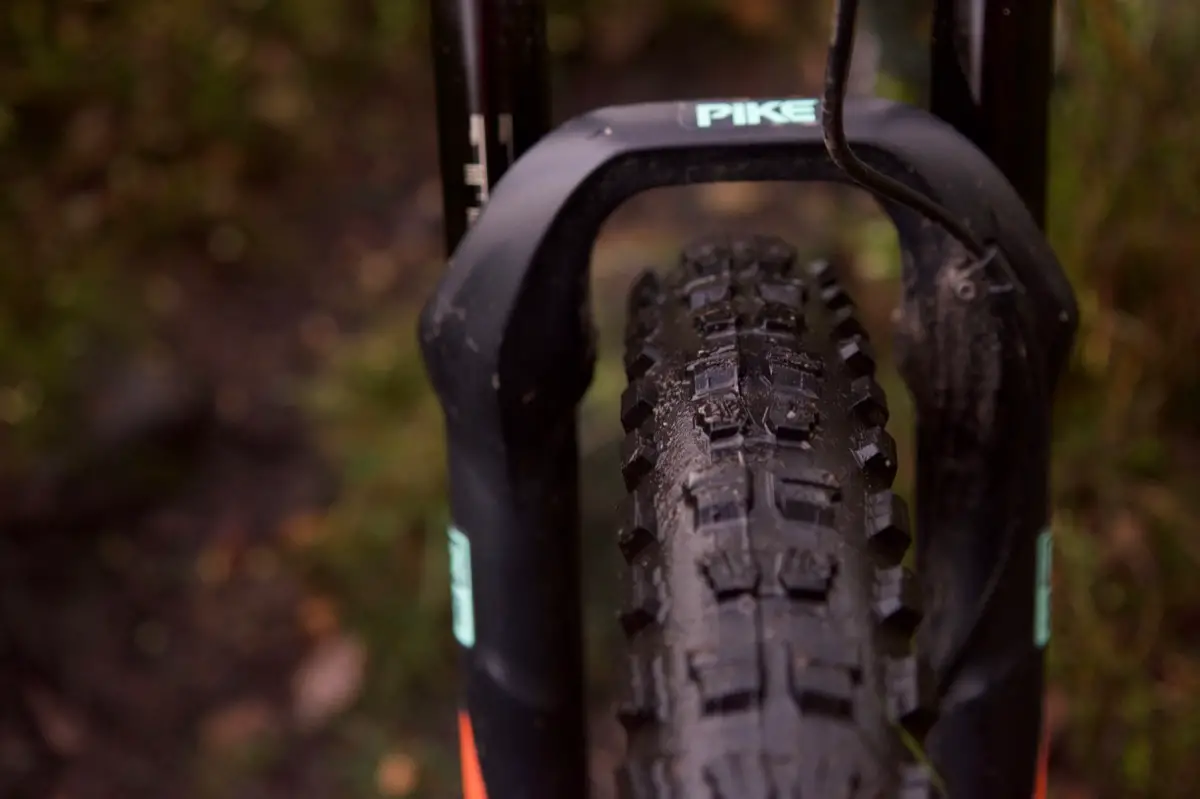
When the trails became somewhat more damp the tyres still impressed – I had bags of traction during an extremely wet trip to Coed y Brenin which left many of my (rather more skilled) riding mates scrabbling for grip. I could just charge into corners safe in the knowledge that the tyres would see me right through to the other side. It was initially rather disconcerting; I was expecting to lose traction any moment, and it’s only through a distinct lack of self-preservation instincts that I realised I could properly crank over and the tyres would hold. They’ve behaved impeccably on long rocky rides, short loamy ones and everything in between.

Recently, though, as the weather has properly set in, the usual issues have raised their heads. When things get properly greasy and muddy the Slaughter in particular struggles to bite through to firmer terrain underneath, and struggles for traction. Similarly it becomes much, much easier to find the wash-out point of the Butcher, though it’s less of an issue than it is with the much more delicate Slaughter treads. Mind you, they both held on to their traction for longer than I’d have expected in comparison to other chubby tyres I’ve tried. And it’s true that other tyres also struggle in the conditions I’ve recently been subjecting my bike (and my washing machine) to. I’d suggest trying to the Butcher as a rear tyre as well – the hit on rolling resistance that those larger knobbles provide would be well worth the increase in grip.
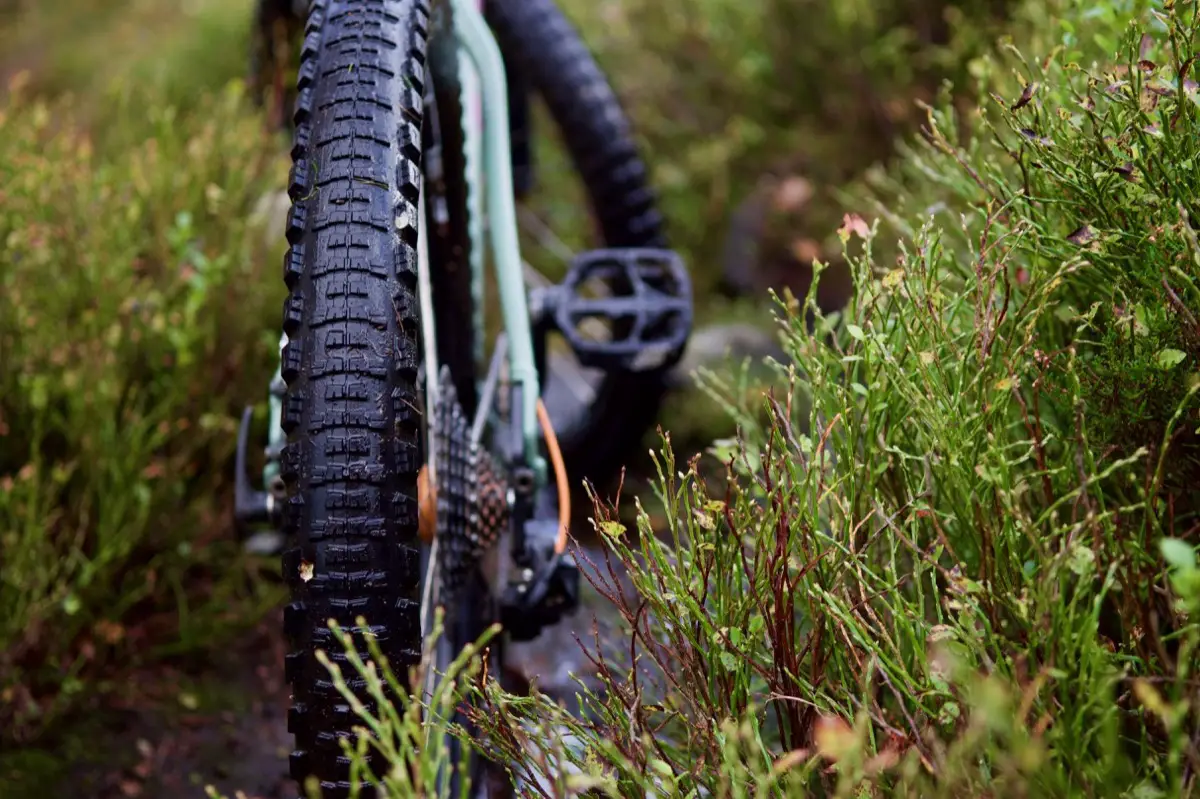
Overall
This is a fine pair of chubby tyres, especially for the money. Granted, the Slaughter in particular might well not serve well in the winter, but when the trails dry out a little these are great fun – a little of the playfulness and forgiveness that makes chubbies worth a go, and a whole lot of straight line and cornering traction.






What tire pressure’s do you use? I run Nobby Nics
3:00 at 10 or 12 psi and they just grip (2017 Pinemountain1)
Tyre pressure is a factor very much dependent on individual rider weight, terrain and riding style. I’m heavy (200lbs) and enthusiastic/hamfisted and I live in Yorkshire so I run around 16-17 in the back and 15-16 in the front. Any less and they get very vague and roll-y in corners (that’s all chubby tyres I’ve tried, even on wider rims than these), and I risks flats and knackered sidewalls. I was riding them on a SantaCruz Chameleon (as in the pics above) and a SantaCruz Hightower. HTH!
Don’t suppose you measured the width when mounted to the the 29mm rim? Am trying to mount to the rear of a Mk 2 Cotic Solaris and have made one expensive mistake already! Thanks